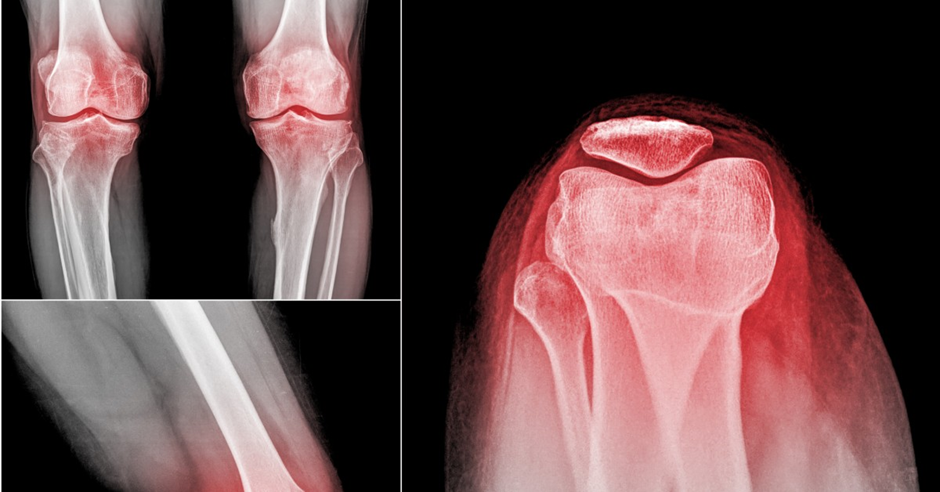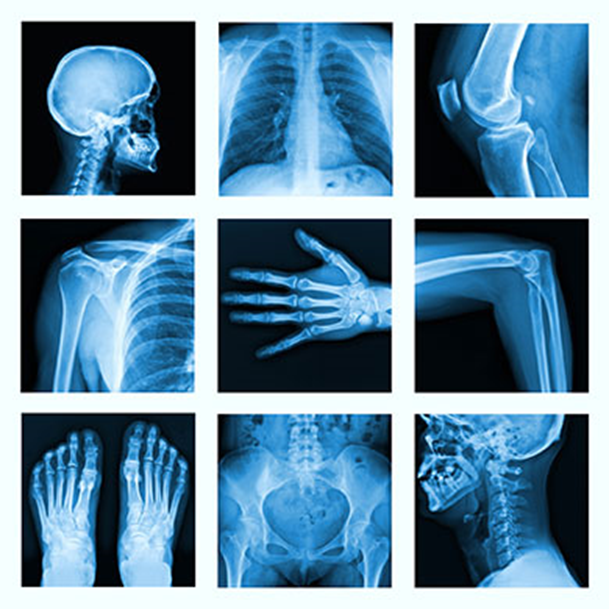Pain is an omnipresent aspect of the human experience, a silent signal that something isn’t right within our bodies. In the realm of modern medicine, the role of X-rays and MRIs in pain management stands as a beacon of hope, offering a glimpse into the intricacies of the human anatomy. Have you ever wondered how these advanced imaging technologies navigate the complexities of pain and pave the way for effective management?
Pain, in its diverse forms, serves as the body’s alarm system, signaling distress or injury. However, understanding the root cause of pain requires more than just acknowledging its presence; it demands precision and accuracy in diagnosis. This is where medical imaging, particularly X-rays and MRIs, takes center stage. These technologies have become indispensable tools in the realm of pain management, enabling healthcare professionals to visualize and comprehend the underlying issues contributing to discomfort.

Understanding Pain
Definition of Pain: Pain is a multifaceted and subjective experience, encompassing sensory and emotional elements. It serves as the body’s warning mechanism, alerting individuals to potential harm or injury. Pain can manifest in various ways, ranging from acute, short-lived sensations to chronic, persistent discomfort that significantly impacts one’s quality of life.
Causes of Pain: Understanding the causes of pain is crucial for effective management. Injuries, inflammation, and underlying medical conditions such as arthritis or neuropathy can contribute to discomfort. Accurate diagnosis is paramount to developing targeted interventions that address the specific factors contributing to an individual’s pain experience.
Role of Medical Imaging
Introduction to X-rays: X-rays, a cornerstone of medical imaging, operate on the principle of electromagnetic radiation. They are particularly adept at capturing detailed images of bones, making them invaluable for detecting fractures, joint issues, and spinal abnormalities. X-rays provide a quick and non-invasive means of visualizing the skeletal structure, offering a foundational layer of information for pain management.
Introduction to MRIs: On the other hand, Magnetic Resonance Imaging (MRI) utilizes powerful magnets and radio waves to generate detailed images of soft tissues, organs, and structures within the body. MRIs excel in revealing the intricacies of muscles, ligaments, and the central nervous system, offering a comprehensive view beyond what X-rays can provide.
X-Rays in Pain Management
Diagnostic Purposes: X-rays play a pivotal role in pain management by serving as a diagnostic tool. In cases of suspected fractures or joint issues, X-rays provide a rapid and detailed view of the skeletal system. This quick assessment aids healthcare professionals in confirming or ruling out specific conditions, laying the groundwork for subsequent pain management strategies.
Guidance for Procedures: Beyond diagnosis, X-rays serve as guiding lights during pain management procedures. Whether it’s the precise administration of injections or the delicate execution of surgical interventions, X-rays enable healthcare professionals to navigate with accuracy. This real-time guidance ensures that targeted treatments reach the intended areas, optimizing their effectiveness.
MRIs in Pain Management
Detailed Soft Tissue Imaging: Where X-rays focus on bones, MRIs excel in capturing detailed images of soft tissues. This includes muscles, ligaments, and organs. In cases where the source of pain resides in these softer structures, MRIs offer unparalleled insight. They reveal the subtle nuances of tissue health, enabling healthcare providers to identify abnormalities that might go unnoticed in X-ray images.
Identification of Nerve Issues: MRIs play a crucial role in identifying nerve-related issues contributing to chronic pain. Conditions such as herniated discs or pinched nerves, which often elude traditional X-ray imaging, become apparent under the detailed scrutiny of an MRI. This capability is instrumental in developing targeted interventions for individuals grappling with persistent neuropathic pain.

What to Expect During X-Rays and MRIs
Preparation: Before undergoing X-rays or MRIs, patients should be aware of necessary preparations. This typically involves wearing loose, comfortable clothing and removing any metal objects or jewelry that could interfere with the imaging process. Patients should also communicate any potential pregnancy, as radiation exposure in X-rays can pose risks to the developing fetus.
Procedure Overview: Both X-rays and MRIs involve non-invasive procedures. During X-rays, the patient is positioned appropriately, and a focused beam of radiation is directed at the targeted area. In contrast, MRIs entail lying within a magnetic field while radio waves create detailed cross-sectional images. Both procedures are painless, and the duration varies based on the complexity of the imaging required.
Risks and Considerations
Radiation Exposure: One concern associated with X-rays is radiation exposure. While the levels used in medical imaging are minimal, it’s essential to acknowledge the potential risks. Healthcare providers carefully balance the benefits of accurate diagnosis against the low risks of radiation, ensuring that the overall well-being of the patient is prioritized.
Contrast Agents in MRIs: In certain MRI procedures, contrast agents may be introduced to enhance image clarity. These agents carry a low risk of side effects, such as allergic reactions. However, healthcare professionals carefully assess the necessity of contrast agents, weighing the benefits against potential risks, and ensuring patient safety throughout the process.
Benefits of Early Diagnosis
Timely Intervention: The significance of early diagnosis in pain management cannot be overstated. X-rays and MRIs facilitate the identification of underlying issues at their nascent stages. Timely intervention, guided by accurate imaging results, prevents the progression of certain conditions, potentially mitigating the severity of pain and improving long-term outcomes.
Personalized Treatment Plans: Accurate imaging results pave the way for personalized and targeted treatment plans. Understanding the precise location and nature of the issue allows healthcare professionals to tailor interventions to the individual. This approach increases the likelihood of success in pain management, aligning strategies with the unique needs of each patient.

Importance
- Enhancing Patient Education:
- By elucidating the processes of X-rays and MRIs, patients gain insights into the diagnostic tools that play a pivotal role in their pain management. This knowledge fosters a sense of empowerment and collaboration between patients and healthcare providers.
- Reference: Curtis, C., & Ng, V. (2018).
- Optimizing Diagnosis and Treatment:
- A comprehensive understanding of X-rays and MRIs aids healthcare professionals in accurately diagnosing the root causes of pain. This precision is instrumental in developing targeted and effective treatment plans, optimizing outcomes for patients.
- Reference: Chou, R., Qaseem, A., Snow, V., Casey, D., Cross, J. T., Shekelle, P., & Owens, D. K. (2007). Diagnosis and treatment of low back pain: A joint clinical practice guideline from the American College of Physicians and the American Pain Society.
- Reducing Unnecessary Procedures:
- Knowledge about what to expect during X-rays and MRIs helps patients comprehend the non-invasive nature of these procedures. This understanding may alleviate anxiety and reduce the likelihood of unnecessary medical interventions, promoting a more patient-centered approach.
- Reference: Czarnowski, D., & McCarthy, C. J. (2017). Patient education and engagement in rehabilitation for musculoskeletal pain—A review.
- Improving Communication Between Patients and Healthcare Providers:
- An informed patient is better equipped to engage in meaningful discussions with healthcare providers. This communication is essential for shared decision-making, where patients actively participate in shaping their pain management plans.
- Reference: Frosch, D. L., & May, S. G. (2017). Rethinking shared decision making: Context matters.
- Advancing Personalized Medicine:
- The role of X-rays and MRIs in pain management contributes to the paradigm of personalized medicine. Tailoring interventions based on precise diagnostic information enhances the efficacy of treatments, offering a more nuanced and individualized approach to pain care.
- Reference: Hamburg, M. A., & Collins, F. S. (2010). The path to personalized medicine.
Questions
Why are X-rays and MRIs important in pain management?
X-rays and MRIs are essential for diagnosing the underlying causes of pain by providing detailed images of bones, soft tissues, and organs. This precision allows healthcare professionals to tailor effective pain management strategies.
How do X-rays work in pain management?
X-rays use electromagnetic radiation to create images of bones and joints. They are valuable for detecting fractures, joint issues, and spinal abnormalities, providing a foundation for diagnosing and managing pain related to skeletal structures.
What does an MRI reveal that X-rays cannot?
MRIs excel in capturing detailed images of soft tissues like muscles, ligaments, and the central nervous system. They are crucial for identifying issues such as herniated discs or nerve-related problems that may not be visible on X-rays.
Are X-rays and MRIs safe?
Both X-rays and MRIs are generally considered safe. X-rays involve minimal radiation exposure, and the benefits often outweigh the risks. MRIs use magnetic fields and radio waves, avoiding ionizing radiation. However, specific safety considerations, such as contrast agents, should be discussed with healthcare providers.
Conclusion
In conclusion, the role of X-rays and MRIs in pain management is transformative. These imaging technologies offer a window into the intricate landscape of the human body, guiding healthcare professionals toward accurate diagnoses and effective interventions. From diagnostic purposes to guiding complex procedures, X-rays and MRIs play indispensable roles in shaping personalized pain management strategies.
As we explore the realms of X-rays and MRIs in pain management, it’s crucial to emphasize the importance of consulting healthcare professionals. While this overview provides insights, individual cases vary, and personalized advice from medical experts ensures that the right path toward pain relief is chosen.






